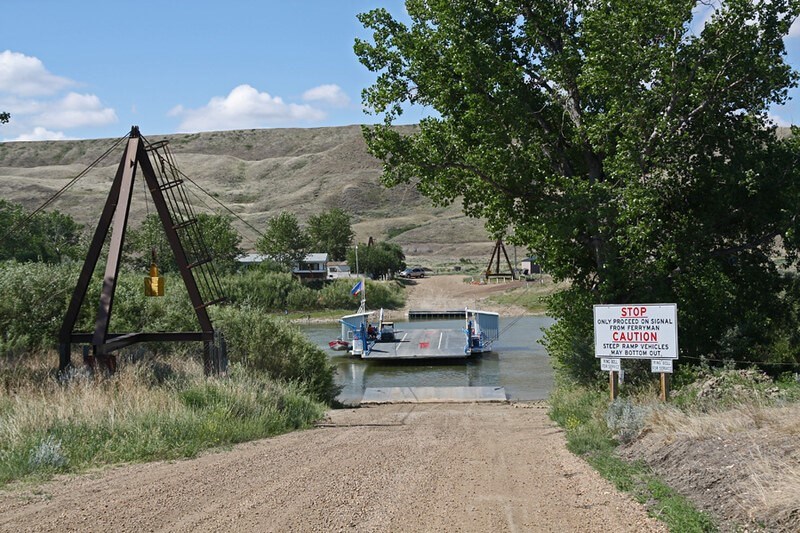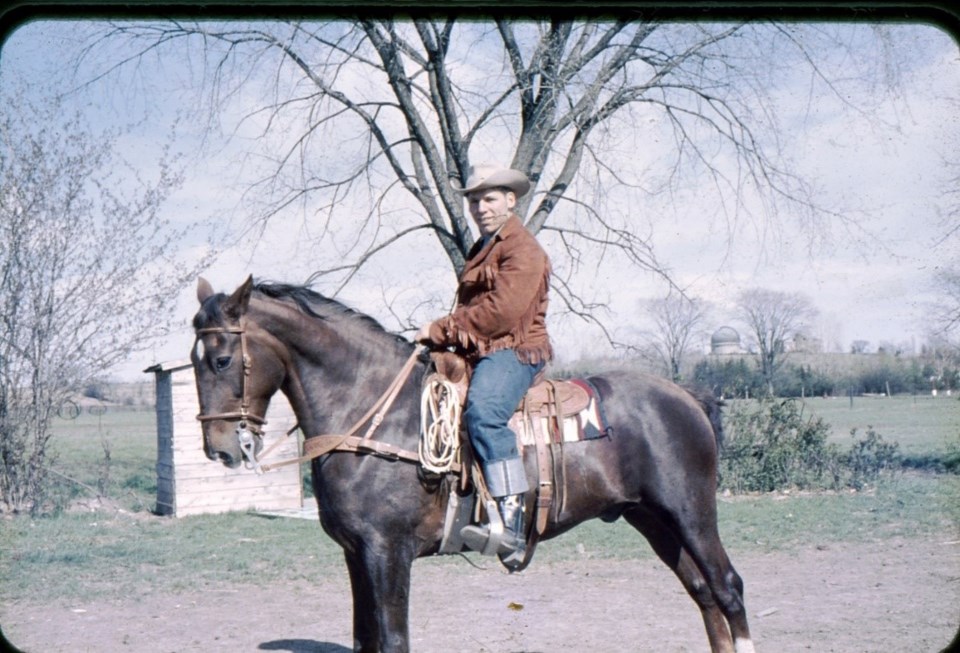In 1958 my buddy, Ronald ‘Wick’ Drury was working on Douglass’ B2P ranch north of Brooks, Alberta. The B2P bordered on the north by the Red Deer River at Finnegan.
The Lead Hand at the B2P was Bill Napier (the last name is changed to protect his descendants), an outspoken man, prone to bragging and bending the truth. Napier considered himself the best calf roper in the district. He bragged he’d trained his big Buckskin mare Rita for calf roping and the two worked like one. He said he’d Calf Roped at the Brooks Rodeo and come in second.
Wick said when he and Napier were moving cattle north to the Red Deer River he asked him for a demonstration of his incredible roping skill. Bill was more than happy to oblige.
Usually the roper is on the left and a hazer rides on the right, keeping the calf between them. Wick didn’t know how to haze so Napier selected a calf, separated it from the others and pushed it between him and the barbed wire fence. The fence would act as the hazer. Wick would ride along side and “watch and learn” as the Lead Hand said.
Wick took his place. Napier knotted the log end of his rope to the saddle horn and shook out a fair sized loop. They began chasing the calf along the barbed wire fence. The Buckskin was performing beautifully. At full gallop Napier twirled the lariat loop, leaned a little forward and up in the stirrups ready to snag the big spring calf.
In 1958 the barbed wire fences north of Bassano and Brooks were ‘picket fences’. Two big cedar posts were planted every quarter mile, reinforced with a cross brace and barbed wire was strung along the quarter mile to the next set of Cedar posts. In-between were willow pickets, which were long willows sticks cut from diamond willows in coulees near the river. Using a pry bar, a small hole was punched in the prairie. One end of the picket was put in the hole, it was stood straight up and the three wires were stapled to it. It was cheap, easy to fix; you just added more pickets when needed and the fence could lean over and spring right back up.
Slow down — you’re getting ahead of me.
The roping demonstration was going well. The calf ran straight — the Buckskin was flat out and focused. The Lead Hand swung the loop just as the calf passed the quarter mile cedar posts. The calf swerved. Napier’s loop floated out where the calf wasn’t. The loop settled over the second of the two solid cedar posts.
Wick said it was the look on Napier’s face that caught his attention. As the slack went out of the rope Napier tried to undo the pre-set dally around the saddle horn. He couldn’t.
Once tight the rope swung rider and horse into the picket fence. They went down with Napier taking the worst of it. Wick said when the mare got up she gave Napier the most disgusted look he’d ever seen on a horse.
Wick left the B2P in 1959 for a stint in the Army. When he came back he worked west of Airdrie for a few years and then moved to Ontario. He took care of the horses at Black Creek Village until retirement. Wick left the ‘open range’ in 2017.
This is a true story of life around Finnegan, Alberta. The name of the Roper is changed to save him and his descendant embarrassment.
 Finnegan Ferry, Finnegan, AB. By Richard Dowson
Finnegan Ferry, Finnegan, AB. By Richard Dowson



